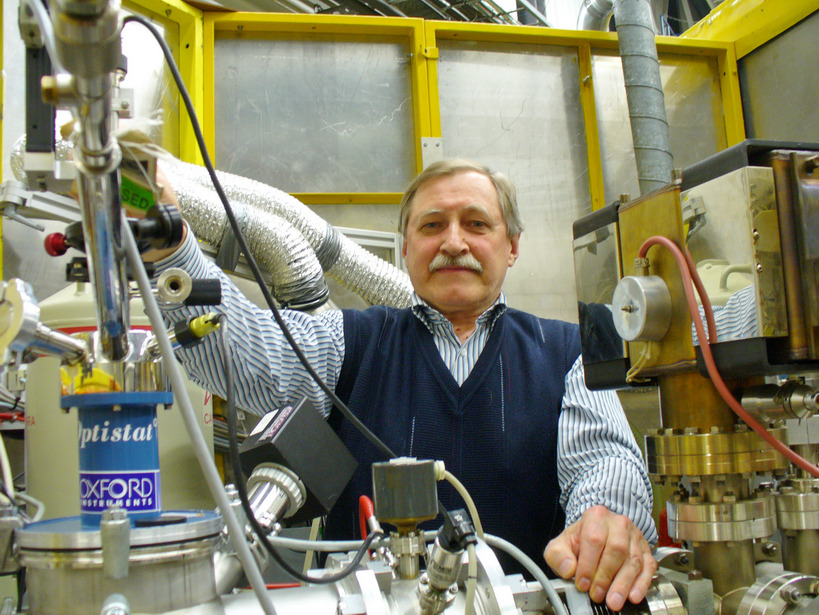The world's scientific media report a major breakthrough in physics - the creation by a group of Korean researchers of the first superconductor operating at room temperature and normal pressure. MEPhI scientists confirm that the results of the work are impressive, especially in terms of observing diamagnetism in the form of the Meissner effect and the levitation effect.

Professor of the Department of Solid State Physics and Nanosystems, LaPlas Institute, Ph.D. Alexey Menushenkov
Until now, superconductors operating at room temperature have required extremely high pressures. The current study by Korean scientists opens up completely new horizons. Scientists describe a new superconductor based on modified lead apatite LK-99.
Its critical temperature (a key parameter of superconductivity) is 127 °C, which allows the material to be used in a wide variety of terrestrial conditions. In addition, the researchers observed in the material the critical current, the absence of electrical resistance, the critical magnetic field and the Meissner effect (properties that allow the magnetic field to dissipate during the transition, which leads to levitation of the material).
If the first results are confirmed, the world will be shown an example of a room temperature superconductor that does not require extreme pressure to operate. This will open up fantastic opportunities in energy, levitating vehicles, quantum computers and many more technologies that we don’t even know about yet.
Professor of the Department of Solid State Physics and Nanosystems of the Institute for Laser and Plasma Technologies (LaPlas) of the MEPhI, Doctor of Physical and Mathematical Sciences Alexei Menushenkov agrees that the unprecedented attention to the discovery is not surprising.
“The presented results of a group of Korean scientists on the discovery of superconductivity at temperatures above room temperature (127 C) caused a stir not only in the community of physicists involved in superconductivity research, but in the scientific world in general,” he notes. – “The described effect was found in the LK-99 material based on lead apatite oxide modified with the addition of copper oxide with the general formula (Pb10-xCux(PO4)6O (0.9<x<1.1)). The authors claim that the material exhibits metallic properties characteristic of lead Pb(6s1) at temperatures above the critical temperature and superconducting properties characterized by the Meissner effect and levitation phenomena at room temperature and normal atmospheric pressure. Sample A LK-99 reached a critical temperature of 126.85℃ (400K).”
A possible mechanism for the appearance of room superconductivity, explains Professor Alexei Menushenkov, the authors associate with two factors: firstly, with a decrease in the unit cell volume that occurs during the dielectric-metal phase transition, which is achieved by replacing lead atoms with copper atoms (having a larger ionic radius), and, secondly, with the repulsive one-site Coulomb interaction, which enhances the structural deformation in the structure in one-dimensional chains (Pb2–O1/2–Pb2 along the c axis due to the superconducting condensate at Tc. The authors discuss the mechanism within the framework of the 1-D BR-BCS theory.
In addition, the authors present the results of measuring the resistance, the influence of the magnetic field, current-voltage characteristics and the dependence of the critical current on temperature, as well as the results of structural analysis. Attached to the second article is a video demonstrating the manifestation of the phenomenon of levitation.
“I think that the results presented by the authors are extremely interesting,” emphasizes Professor Alexei Menushenkov, “the observation of diamagnetism in the form of the Meissner effect and the levitation effect is especially impressive. The weakest part seems to be the area of structural studies, which leaves doubts about the correctness of the description of this complex structure of the LK-99 material.
Is it possible that this material exists and provides room superconductivity? I think it's possible. However, final conclusions can only be drawn if these effects are repeated by other independent groups of researchers. Here it seems strange that, despite the fact that the authors are ready to advise other groups in the synthesis of the LK-99 material, they did not transfer their samples for research to other groups.
As for the nature of the observed phenomenon, I believe that if the effect is proved, then the nature of the phenomenon is most likely close to the nature of high-temperature superconductivity discovered in 1986 by Bednors and Muller in cuprates, as well as in other HTSC oxides (it still remains riddle)”.





